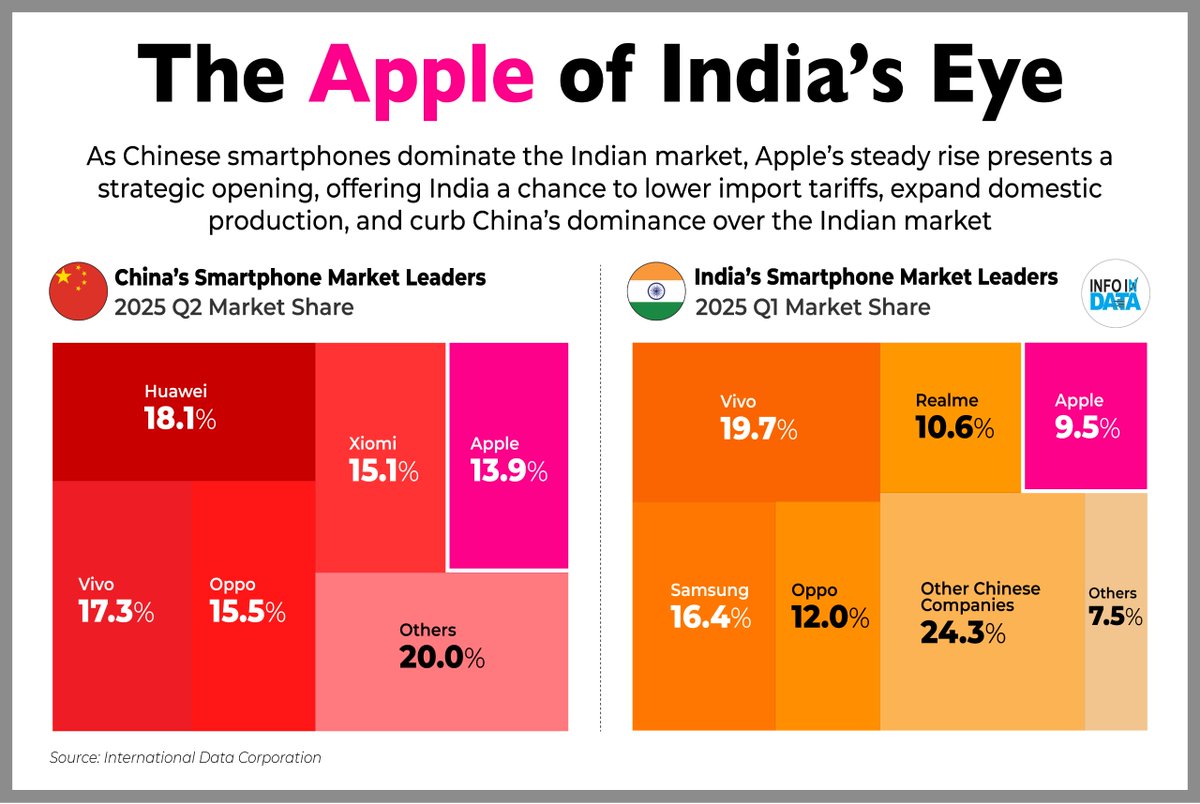
infoindata
@infoindata
Telling compelling stories through infographics that demystify policy, politics, economy, and global events.
With 'Operation Sindoor', the Narendra Modi Government has set a new precedent in response to terrorism being cultivated on the soil of Pakistan. Across the last three days, several terror camps and critical military infrastructure was hit by the Indian Armed Forces.

Since Oct 2019, India has secured over $282 billion in FDI equity. Maharashtra leads with $88.7B, while West Bengal trails at just $1.9B, reflecting how governance uncertainties and an unfavourable business climate have kept investors away from the state.

In the last decade, India has built over 1.1 lakh km of national highways, marking an unprecedented scale of infrastructure expansion that has improved connectivity, accelerated regional development, and reshaped the country’s economic landscape across states.

Historic milestone in India-UK ties! The bilateral trade between both the countries stands at nearly USD 56 billion, with a joint goal to double this figure by 2030. The agreement secures unprecedented duty-free access for India’s exports, covering nearly the entire trade basket.

The signing of the India–UK FTA marks the beginning of a new phase in economic cooperation, bringing lower trade barriers, stronger investment flows, and broader market access. Bilateral trade has already grown 160% since 2015, paving the way for deeper integration.

Despite baseless objections raised by the opposition, Bihar’s Special Intensive Revision has verified 97.30% of electors. The identification of 52 lakh ineligible names underscores the importance of such rigorous audits in preserving the integrity of the electoral process.

Does Bengal really mean business? Nearly 7,000 companies have left West Bengal in under 15 years, offering a reality check to the ‘Bengal Means Business’ claim. Over 86% relocated to BJP+ ruled states, highlighting a stark contrast in business climate and investor confidence.

China is building a $16.7B mega-dam on the Yarlung Tsangpo to generate 70 GW of power, over three times the output of the Three Gorges Dam, while aiming to control water flow to India. But with over 80% of the Brahmaputra’s water generated in India, China’s leverage is limited.

NDA ruled states are spending an average of ₹20,000 per citizen on capital expenditure, more than double the average in Congress-ruled (₹9,110) and other opposition-led states (₹9,320), highlighting a sharper focus on infrastructure and asset creation across NDA governments.

India has outperformed Japan, Germany, and Switzerland in stock returns over the past decade—powered by strong economic fundamentals, structural reforms, and a sustainable growth momentum that continues to draw both global and domestic investor confidence.

Apple’s smartphone market share in China has consistently fallen to 13.9% in Q2 2025, while in India it rose from 7.3% in Q1 2024 to 9.5% in Q1 2025, presenting India with an opportunity to reassess tariffs, scale up local production, and counter Chinese dominance in smartphones.

While BJP-led states ramp up infrastructure investment by committing a larger slice of their budgets to capital spending, most Congress and opposition-ruled states continue to lag behind, weighed down by debt driven by fiscally unsustainable policies.

India’s push for infrastructure is echoed by states like Gujarat and Uttar Pradesh, each spending over 20% of their budgets on capex, on par with the Centre’s 22%. But states like Punjab and Himachal, constrained by debt, spend under 8%, reflecting stark fiscal divergence.

China’s 21–30 workforce has dropped from 30.2% in 2014 to 15.8% in 2024, while those over 50 have surged from 17.1% to 31.6%. This demographic shift and the rise in labour costs present India with a strategic window to position itself as the next global manufacturing powerhouse.

The capex announced by the Modi Government, of more than Rs. 11 Lakh Crore, is not only transforming the highways network, but also focuses on several other sectors, including defence, communications, and housing and urban affairs.

India’s live event industry is booming beyond metros, with Tier 2 and 3 cities emerging as vibrant hubs for concerts, sports, festivals, and business summits. Powered by youth, digital reach, and rising aspirations, it's fuelling local economies and India's creative growth.

As Indo-US trade negotiations are ongoing, the tariffs imposed by Donald Trump on countries across the world are set to impact the U.S. economy, raising import costs, disrupting trade flows, straining global supply chains, and ultimately weighing down its own GDP.

As China holds the largest share of rare earth reserves, India is looking to expand its supply chain through collaborations with Brazil and Australia. With 6.9 million tonnes in reserves, India ranks third globally and is emerging as a key player in the rare earth supply…

Rare Earth Elements power everything from smartphones to fighter jets. From Yttrium in semiconductors to Dysprosium in nuclear rods, these hidden minerals are essential to modern tech, the silent drivers of today’s innovation and tomorrow’s dominance.
